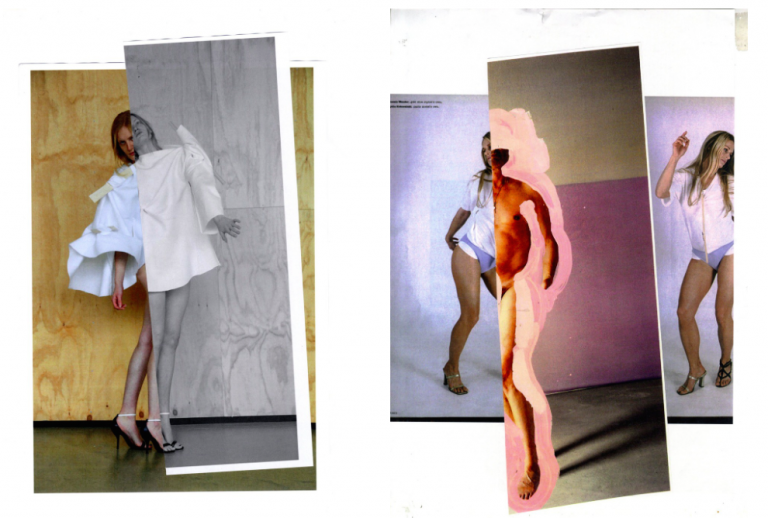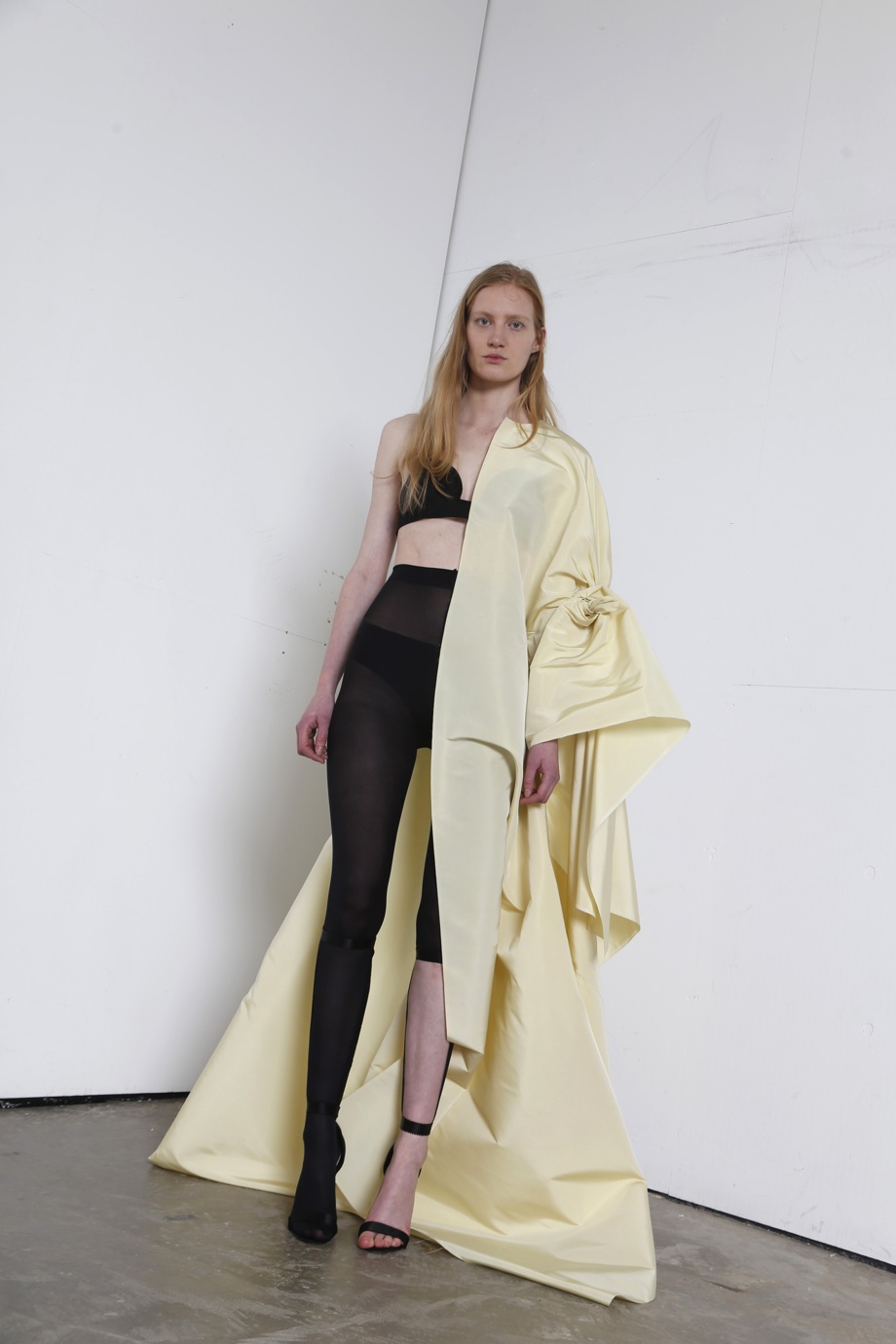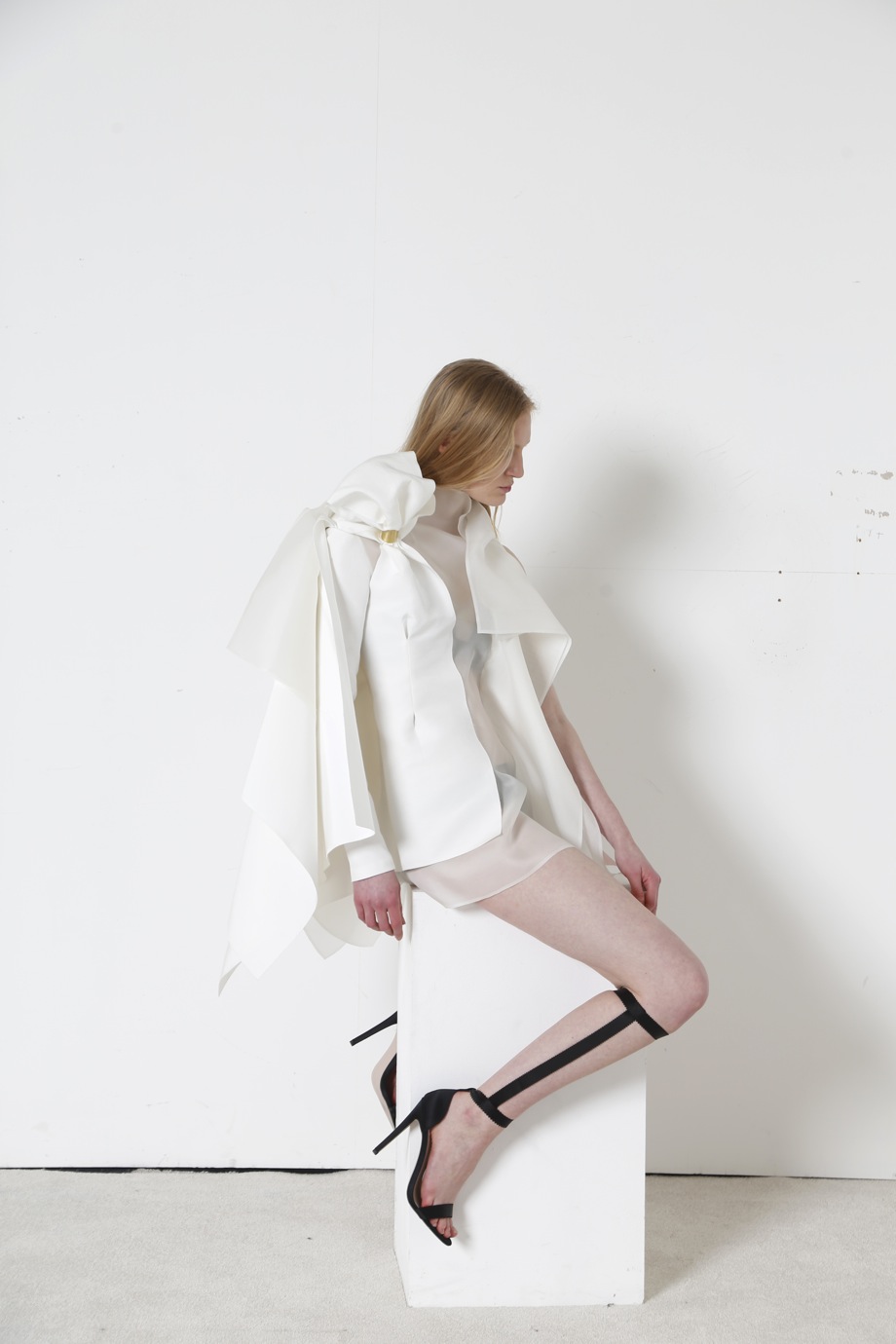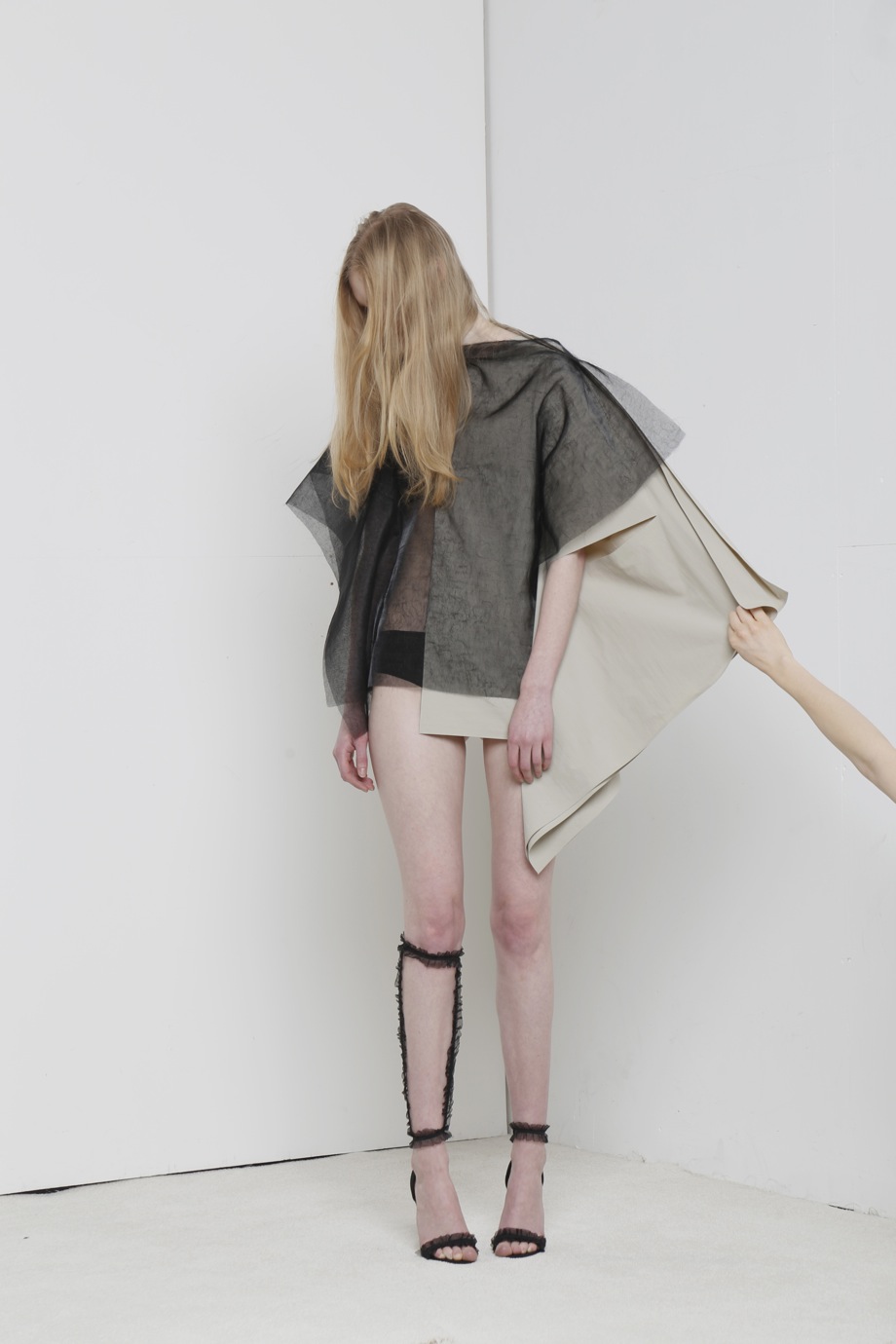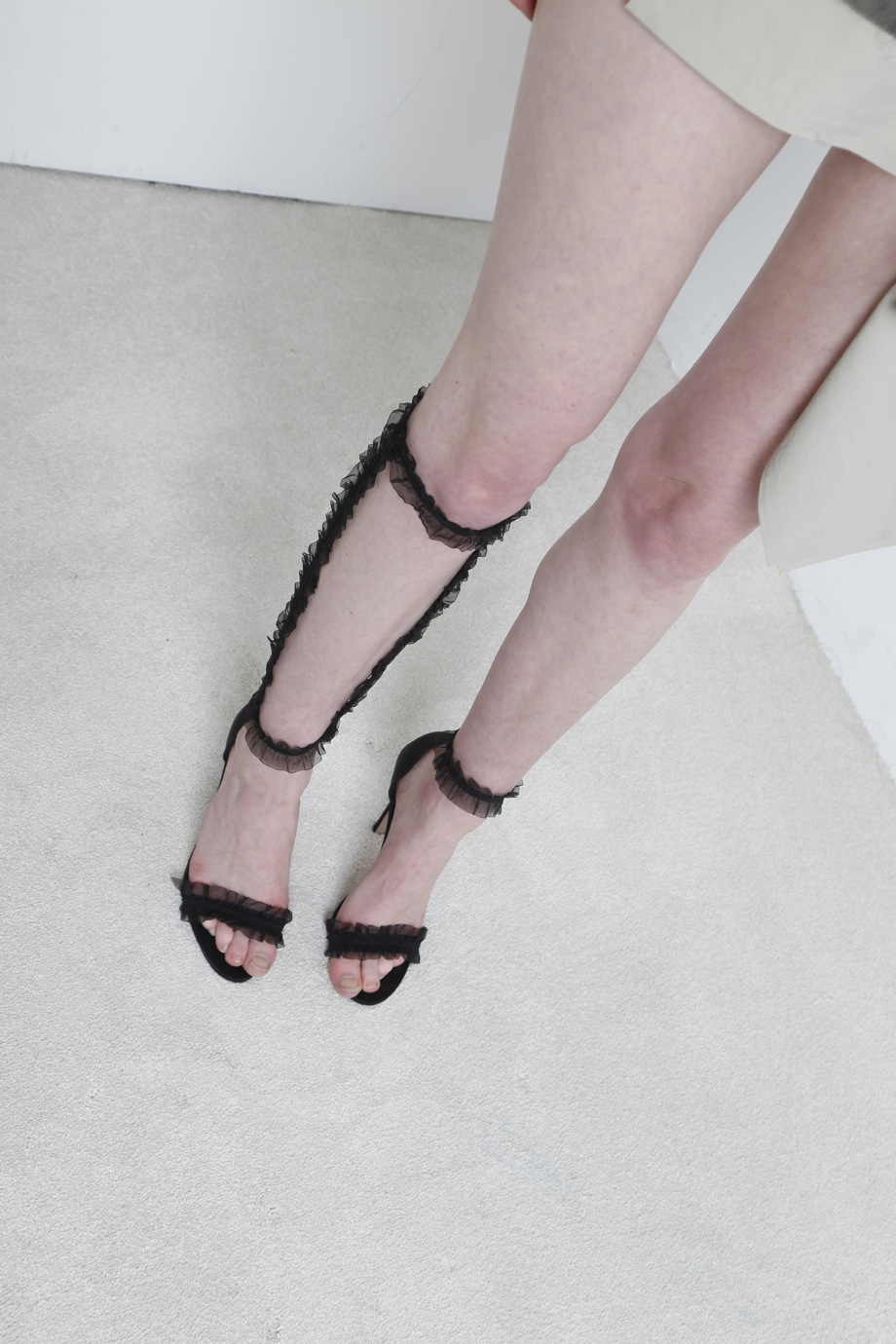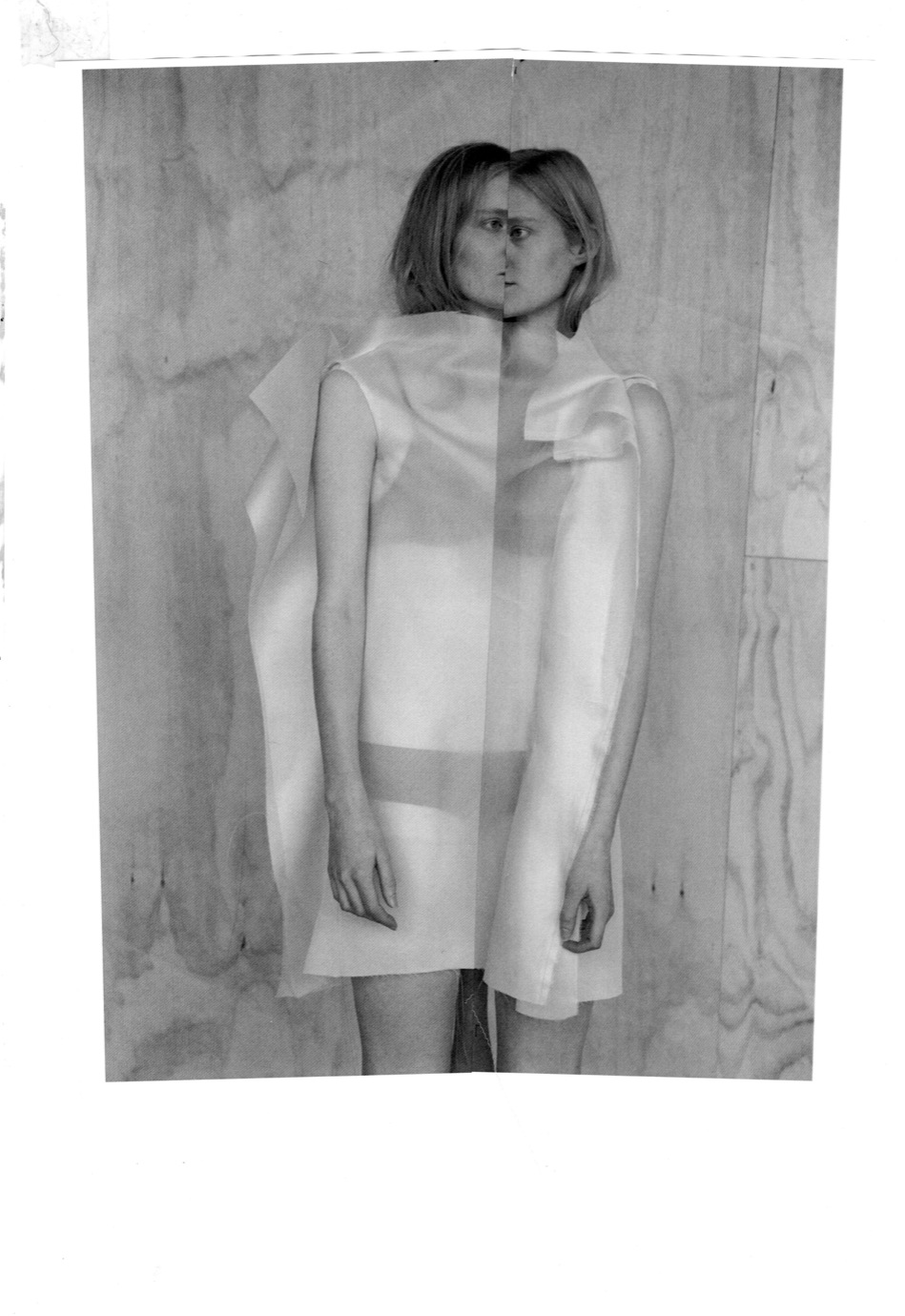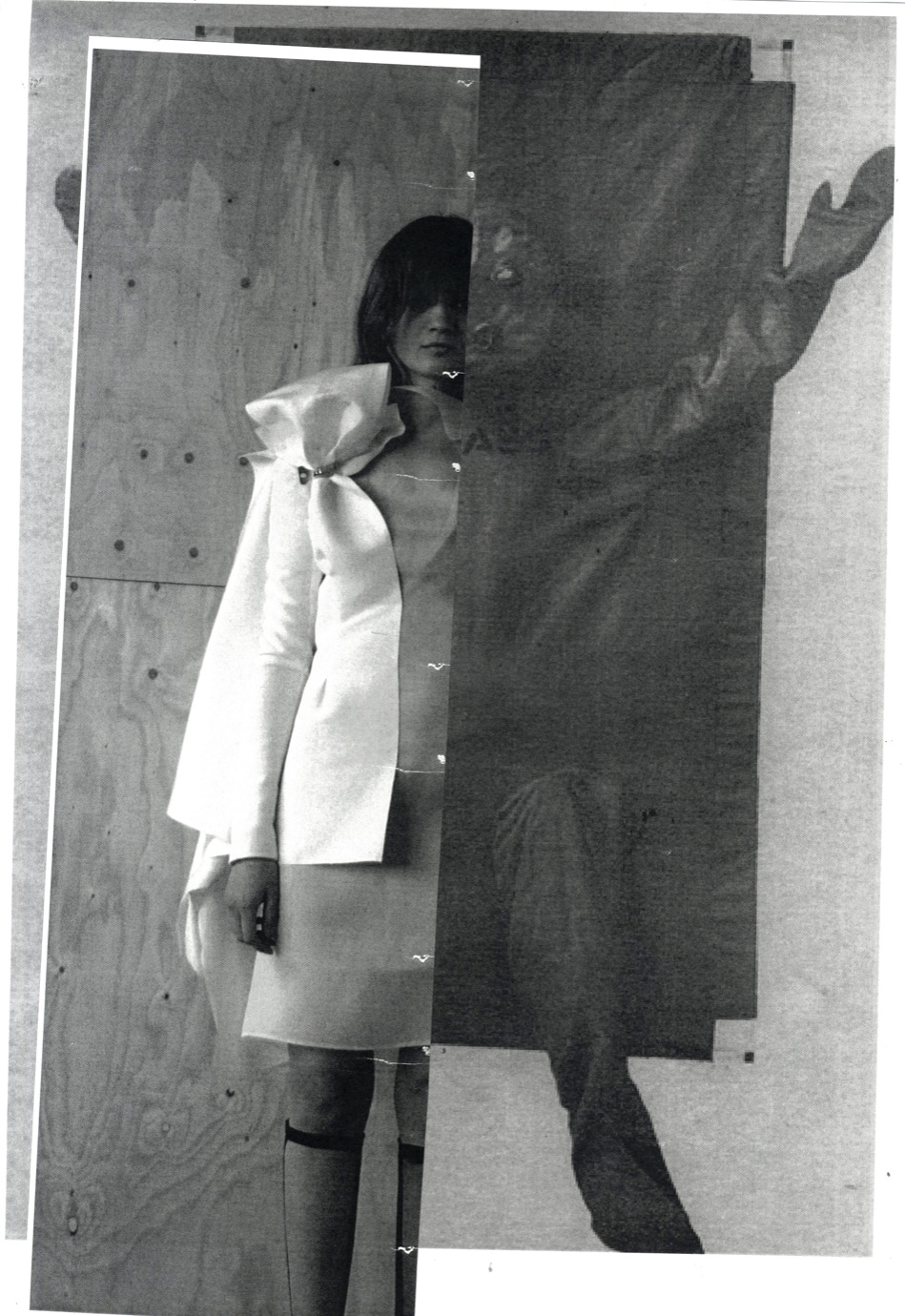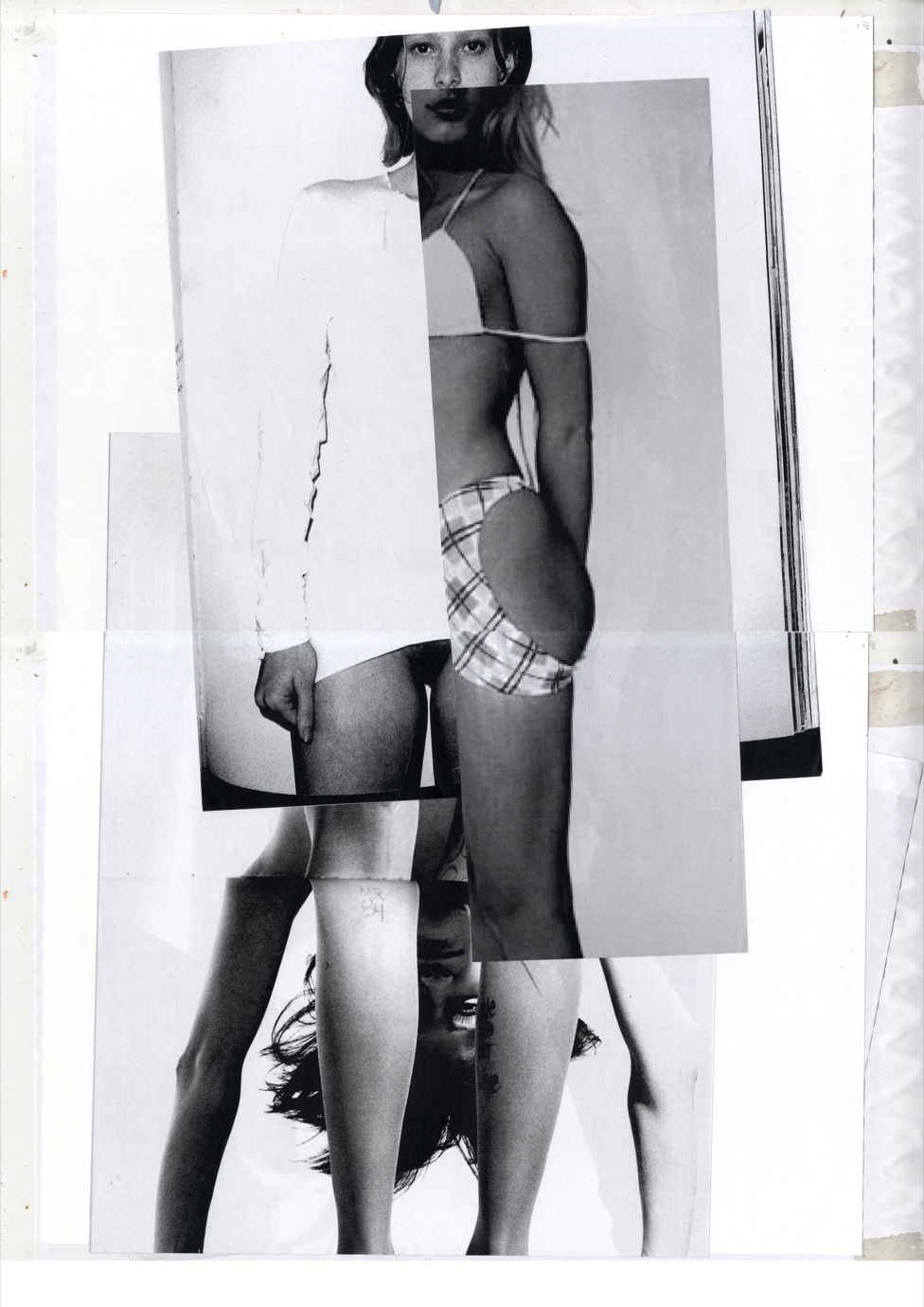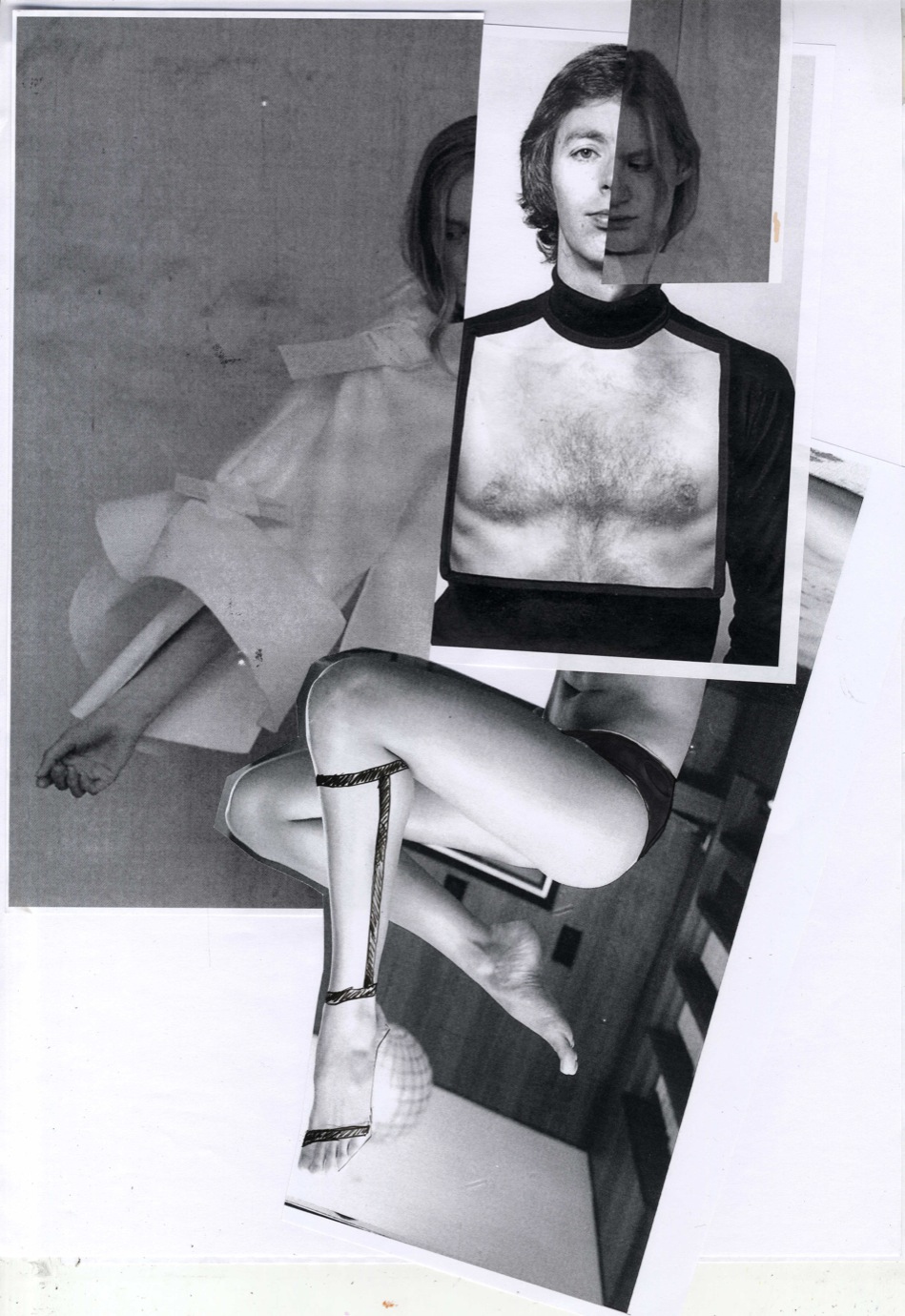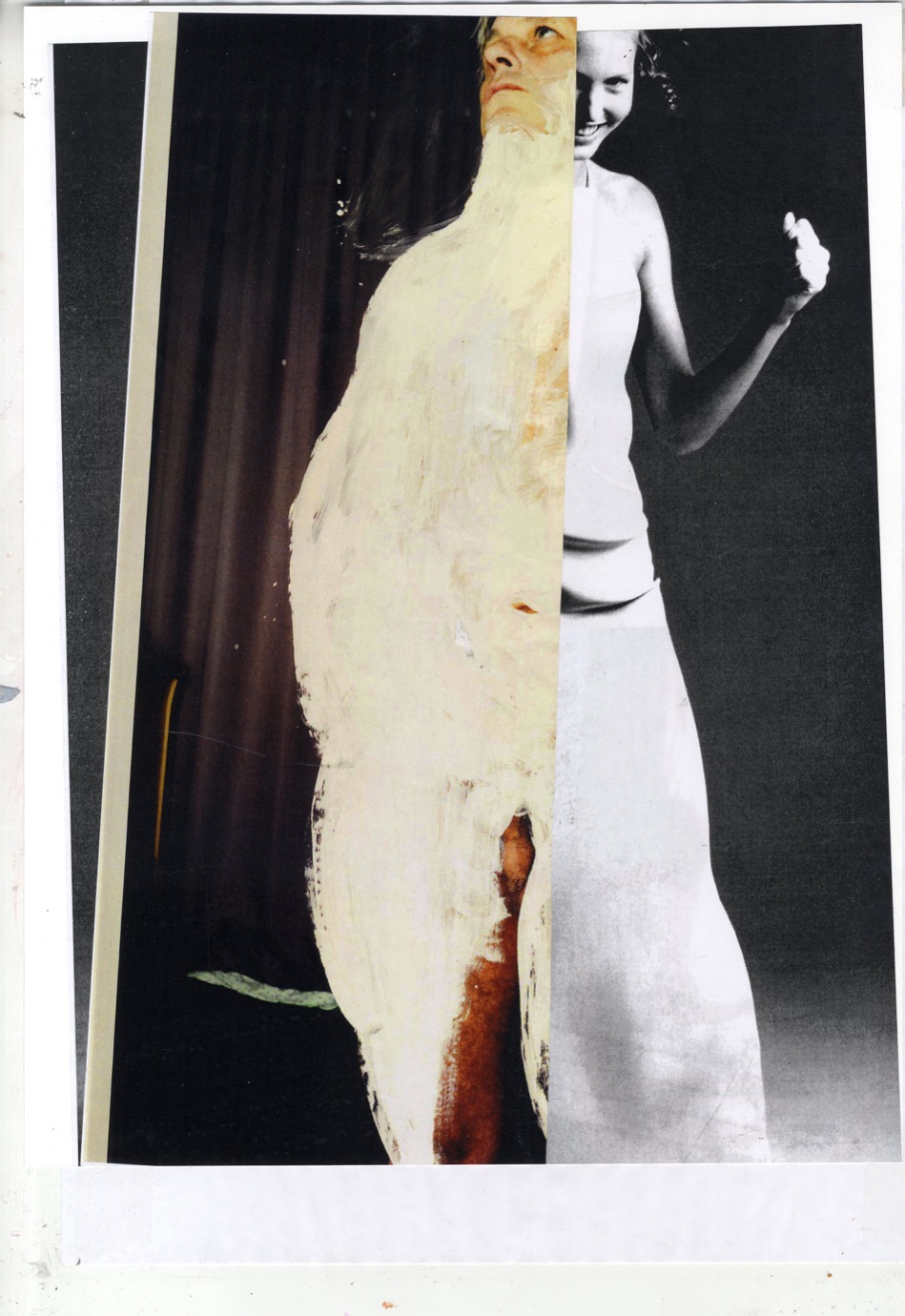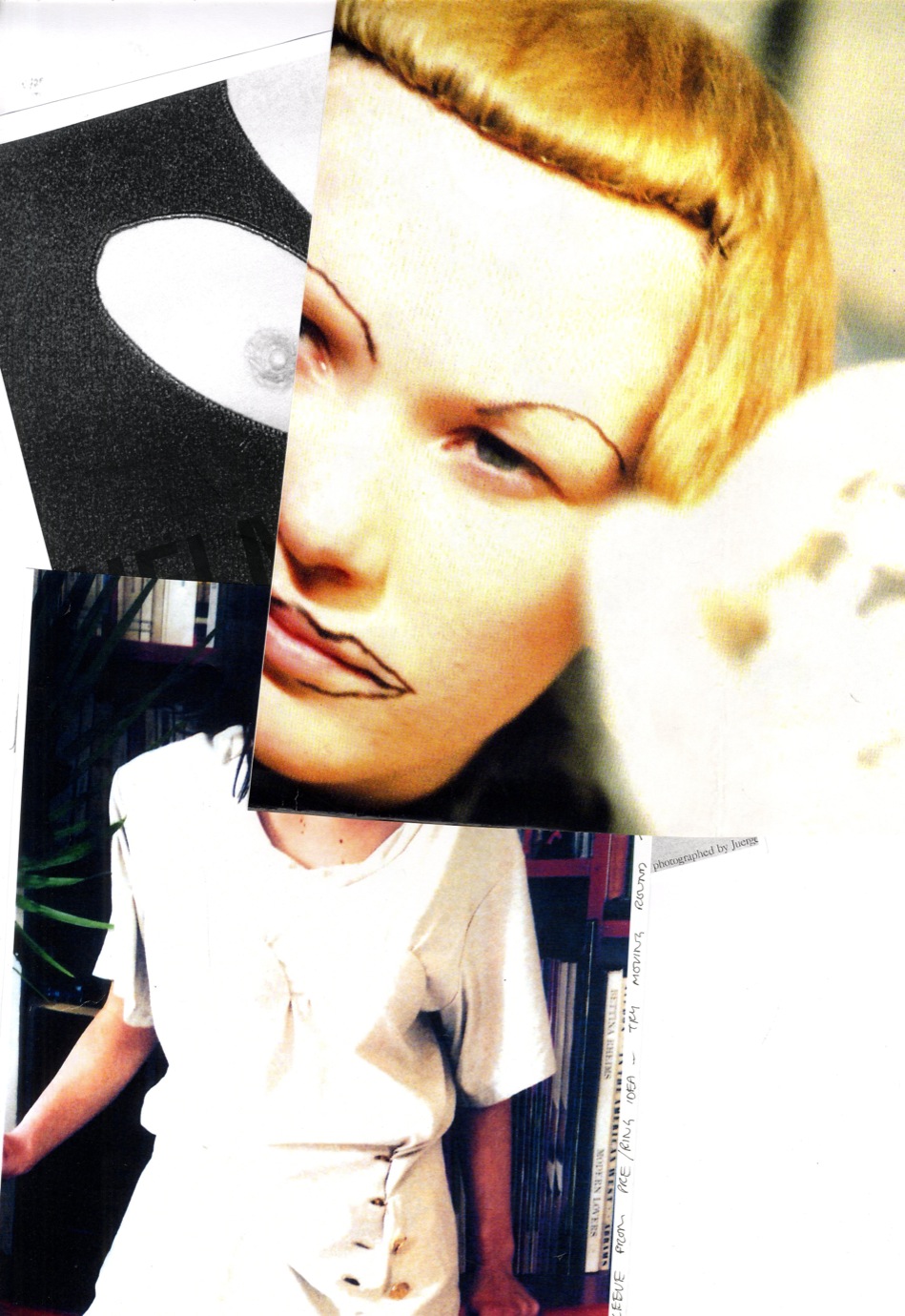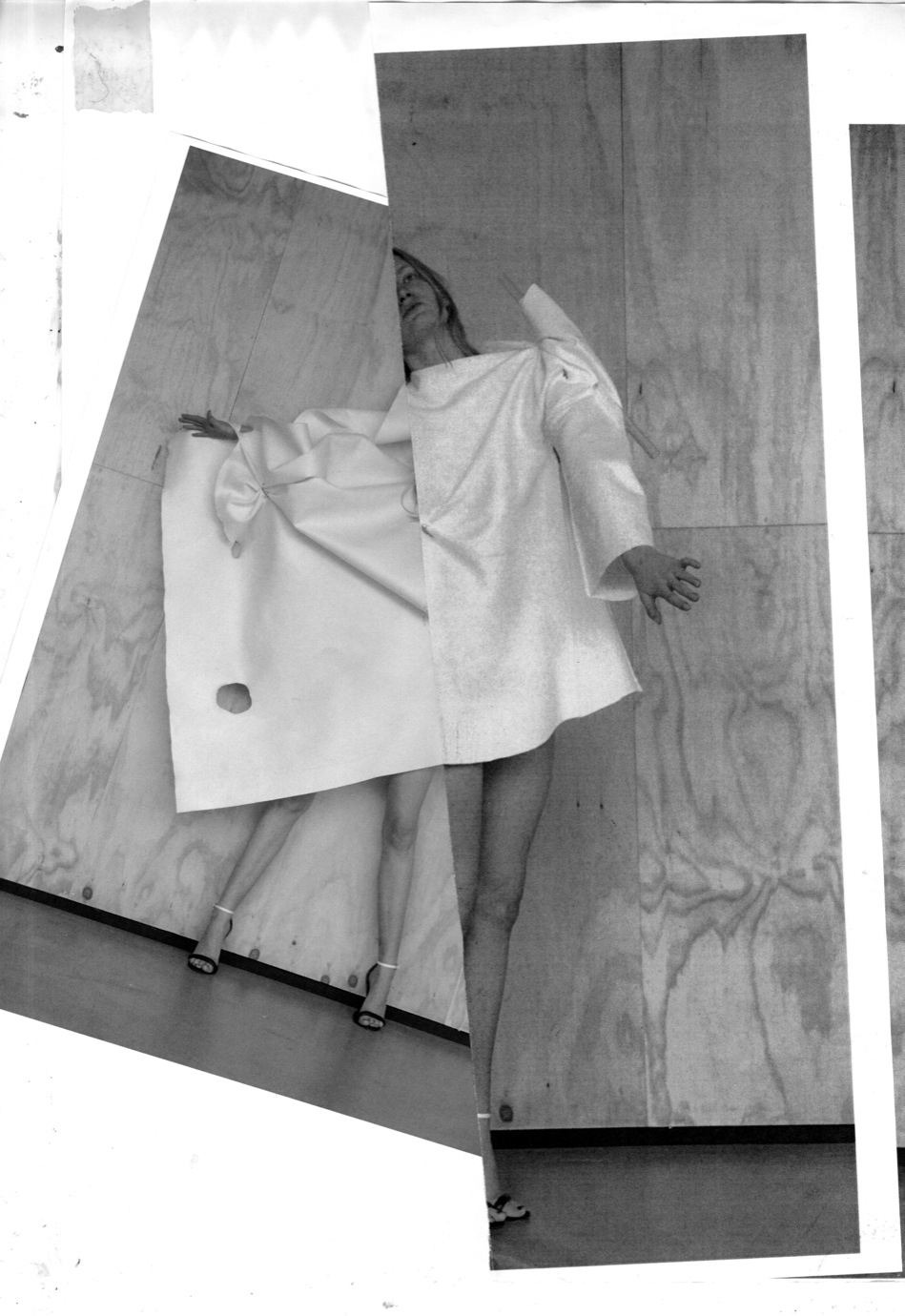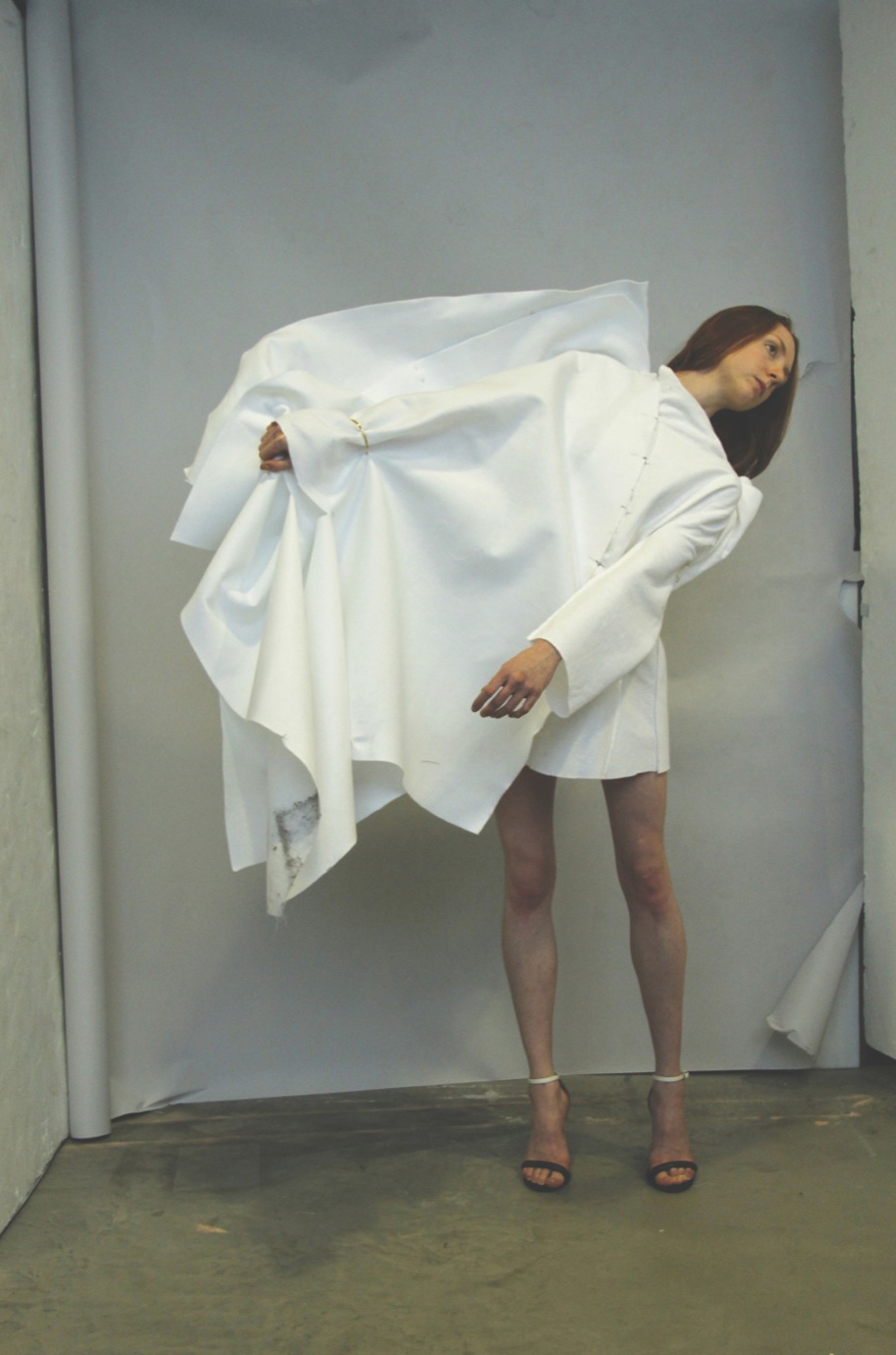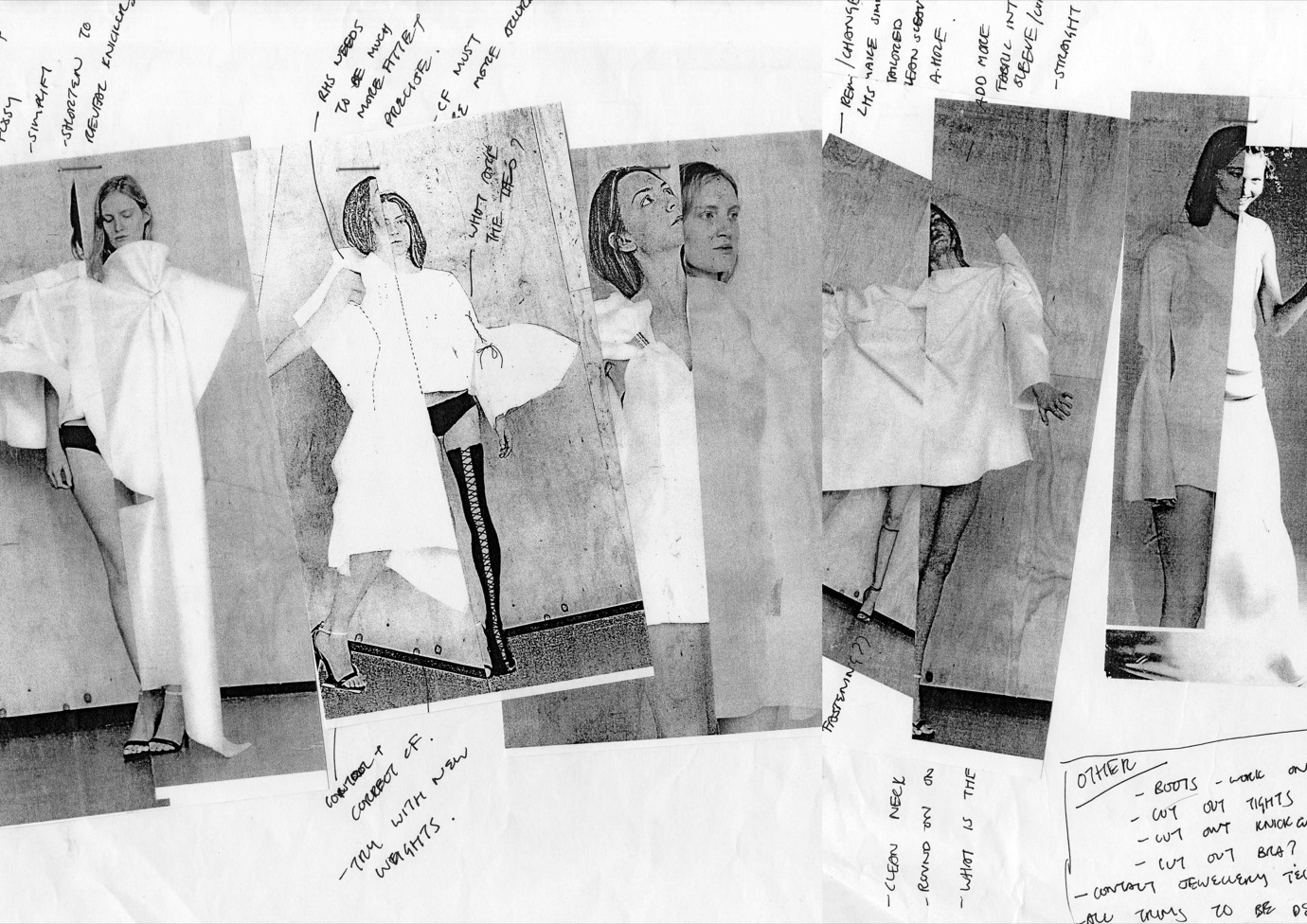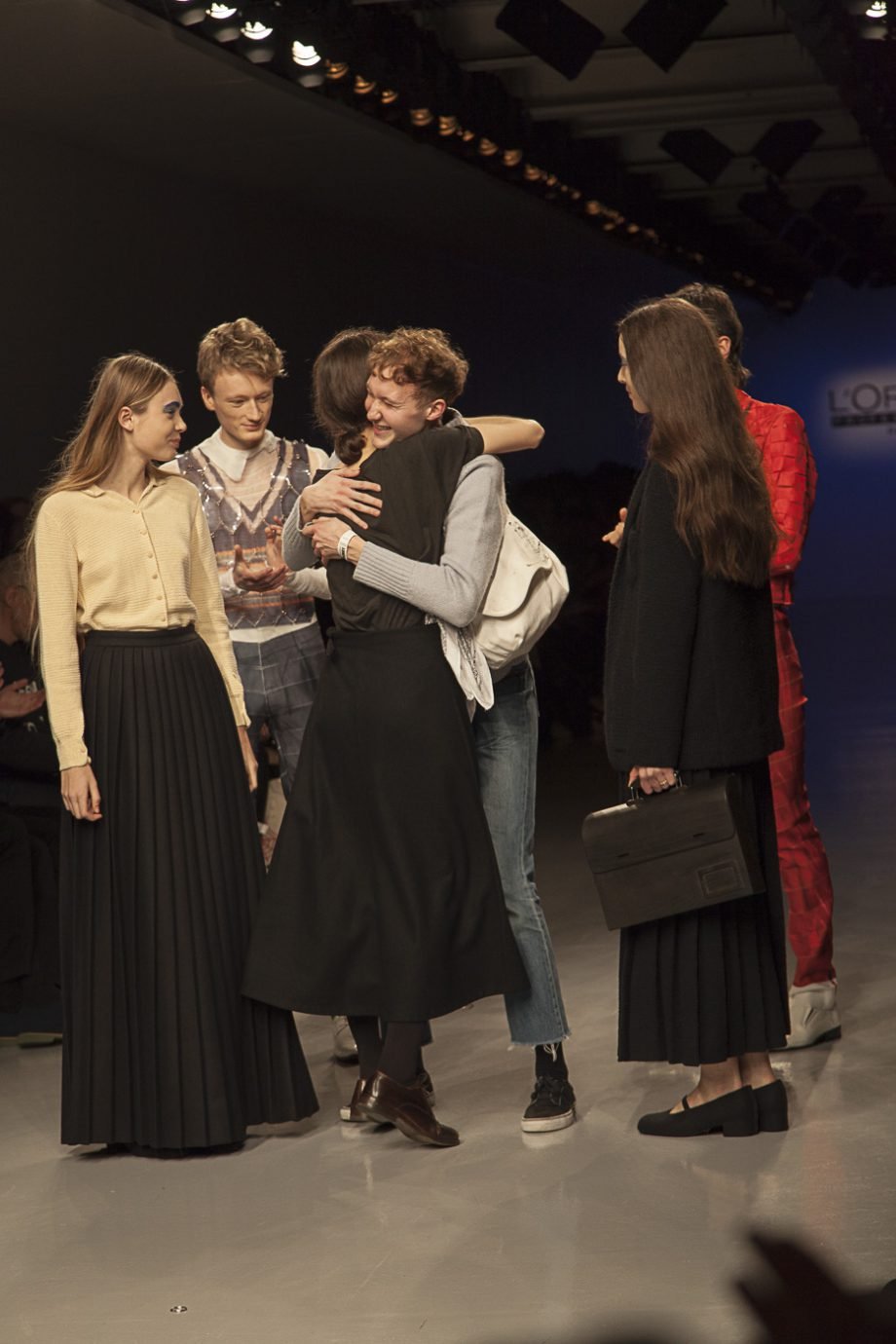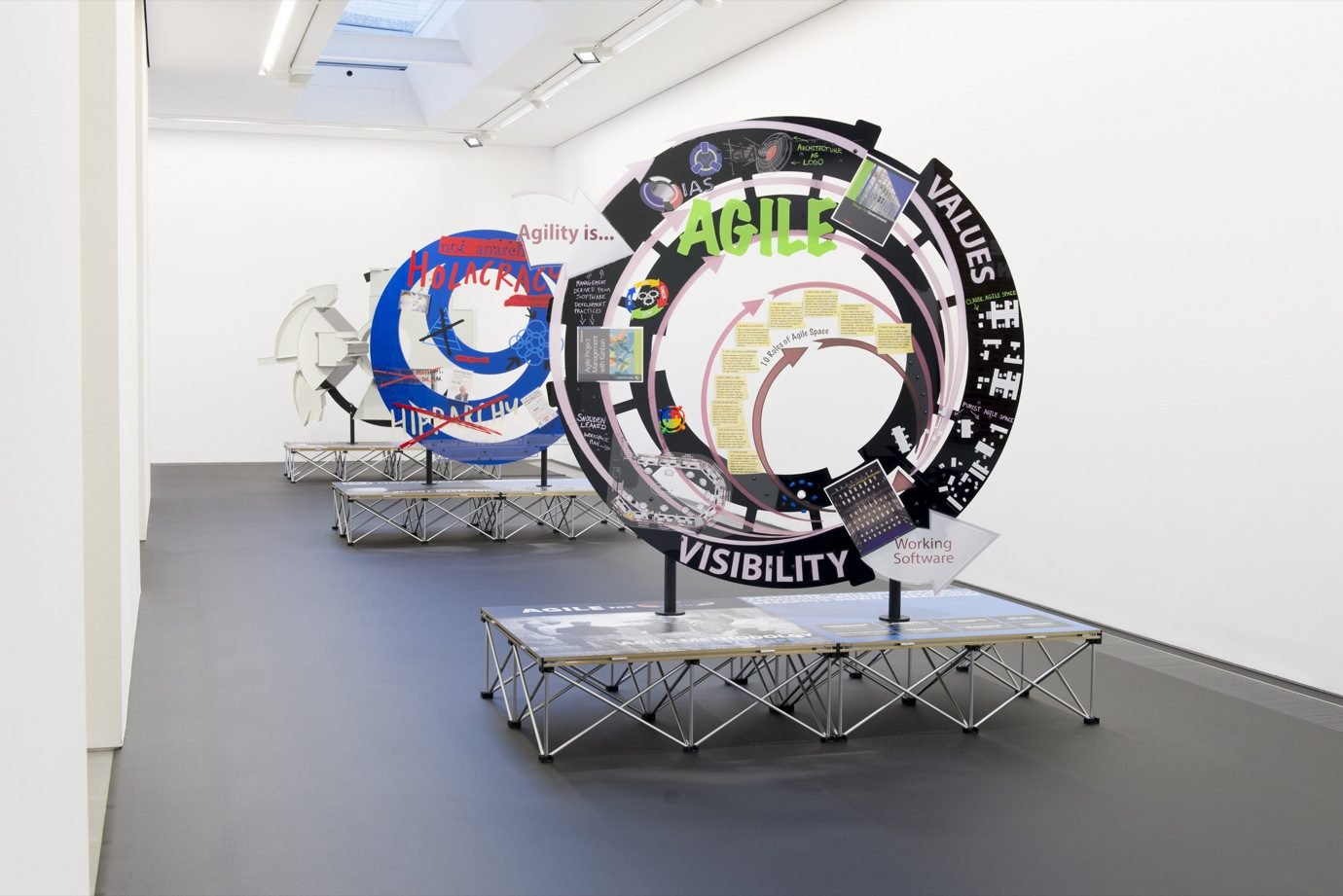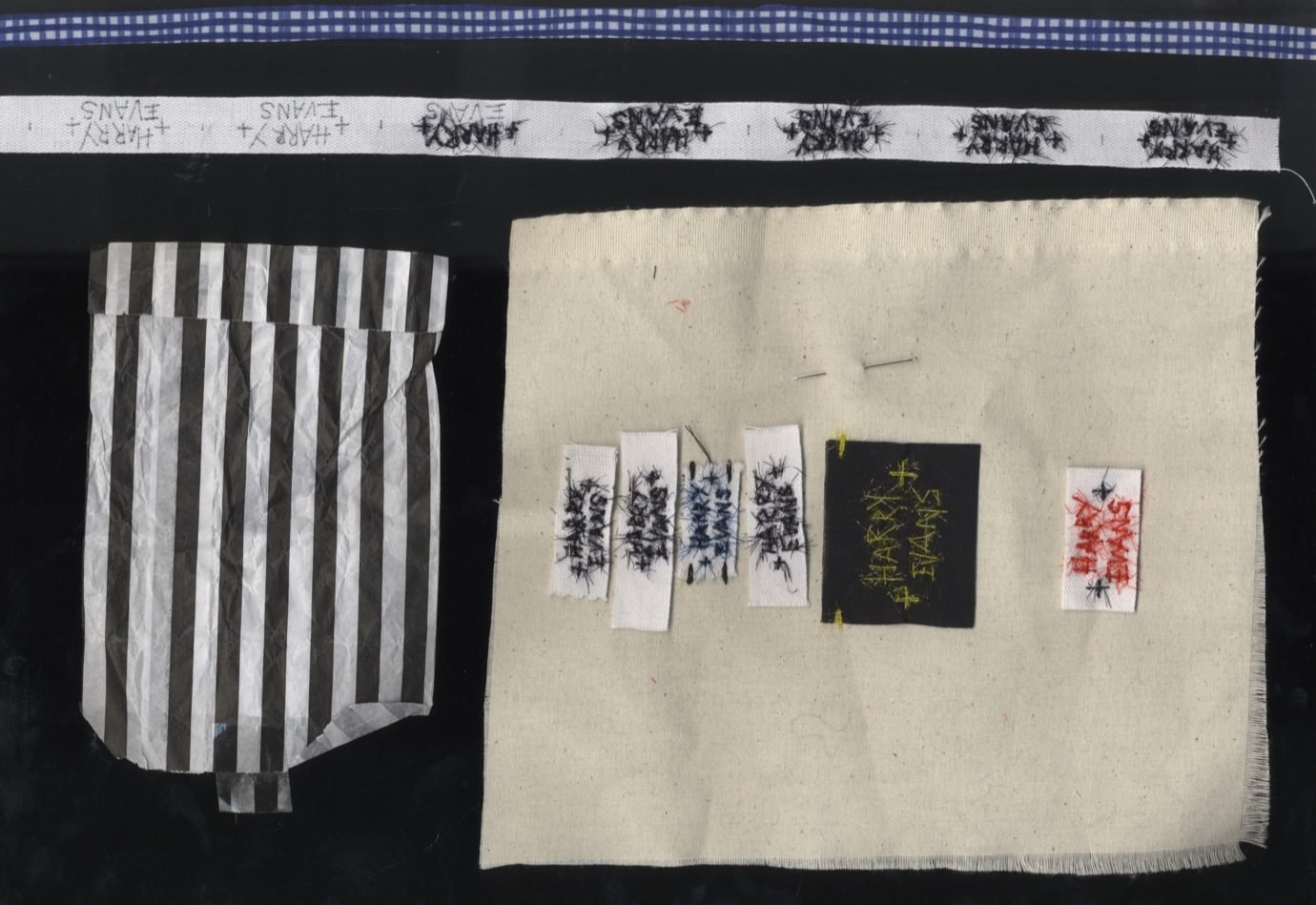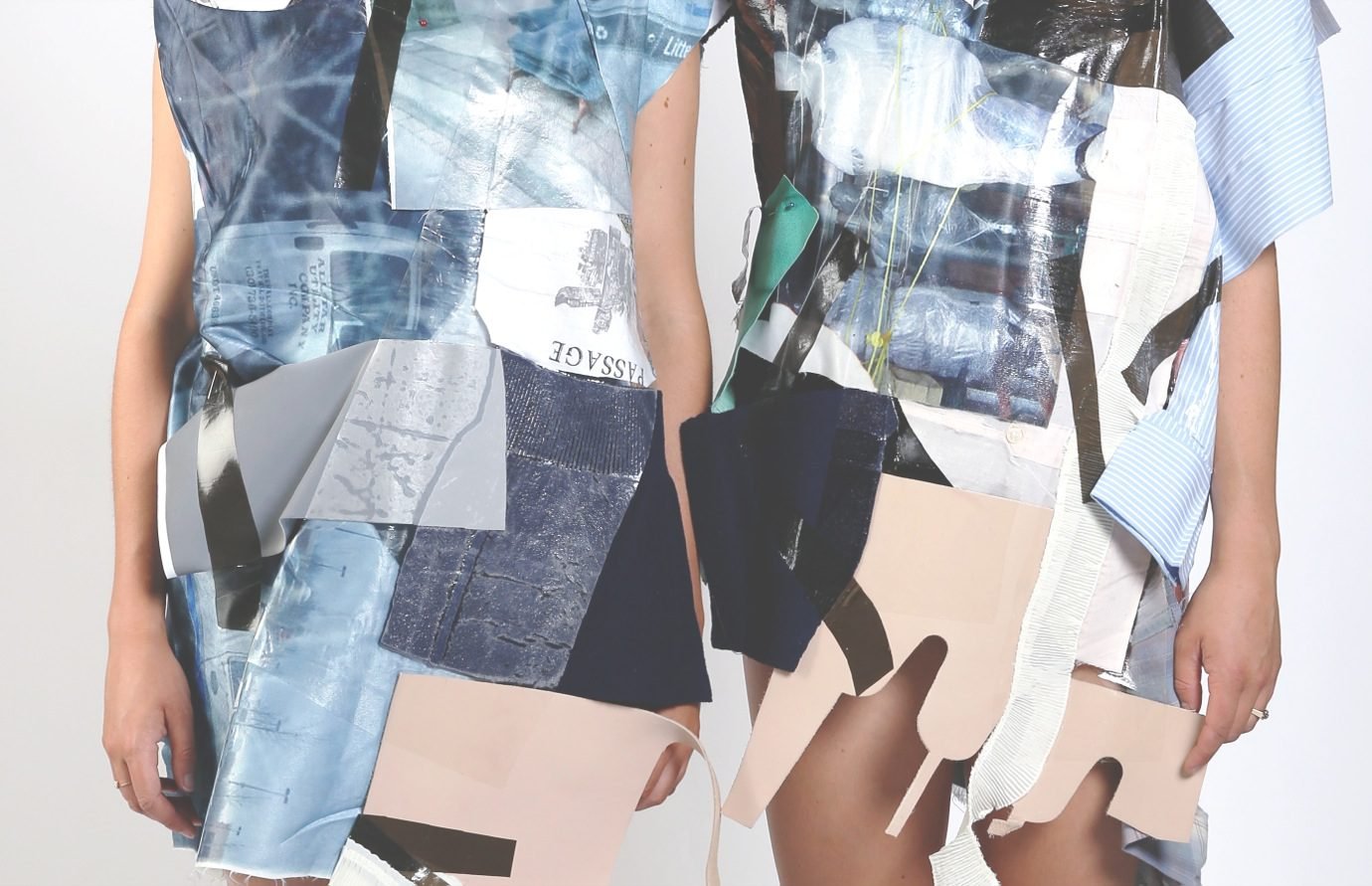“I like things clean,” the 28-year-old asserts, setting down her flat white with filed, neatly manicured hands. “And new, and sharp, and polished, and things to be finished properly.” This interview is our first, and, sat in the college’s King’s Cross campus, we’re trying to pin down exactly what the designer wants her collection to say. She sprints through concepts at roughly a mile-a-minute, to-ing and fro-ing between often opposing ideas, but delivering each one with unquestionable certainty. Finish – and the quality of – is just about the only consistent element we have landed on.
With final line-ups imminent, this might come as a surprise, but Emma’s ability to find value in so many varying ideas is one of her greatest charms. Firstly, because it is unexpected; looking at the bench Emma has spent the majority of her waking hours at since September, you’d likely not pick it out as the home of a fluctuating mind. It’s one of the tidiest, for a start; a sanctuary amongst the reams of fabric surrounding her peers. References are kept on hand, tightly contained in bulging scrapbooks and battered plastic wallets. The clothes themselves hang close-by in their various stages, removed for tweaking, weekly model fittings and review from the tutors. At the heart of the scene is Emma, standing at 5’9” with dyed-red hair pulled back into a low-slung ponytail. Her eyeliner is an impeccable feline flick over wide eyes behind her round spectacles and, most often seen in, “jeans and a t-shirt”, she is a picture of calm.
The trait also appeals for how it has influenced the core theme of her MA collection: a melding of dichotomies. On one side of the moodboard sits a clean, conceptual and reasonably commercial girl, represented in the neutral colours and negative space so pivotal to Emma’s references. On the other resides Sarah Lucas’ boldly coloured stockings, uncomfortable poses directed by Erwin Wurm and the bare skin inherent to Melanie Bonajo’s projects. “Collaging plays a really important role in my design process,” she explains. “It helped me to work out balance and proportion in my work – not only in terms of the garment itself, but also looking at negative space. Keeping the balance of this between my original collages and the final look was key.”

